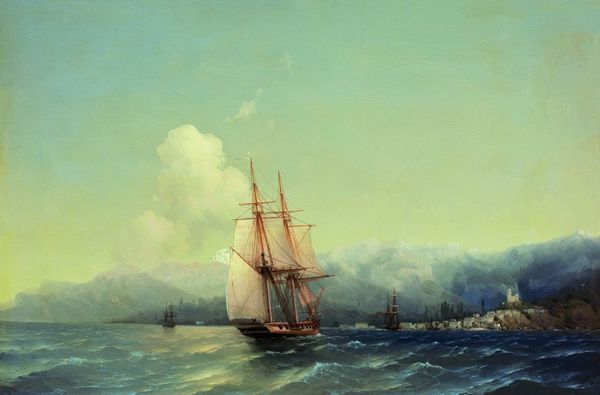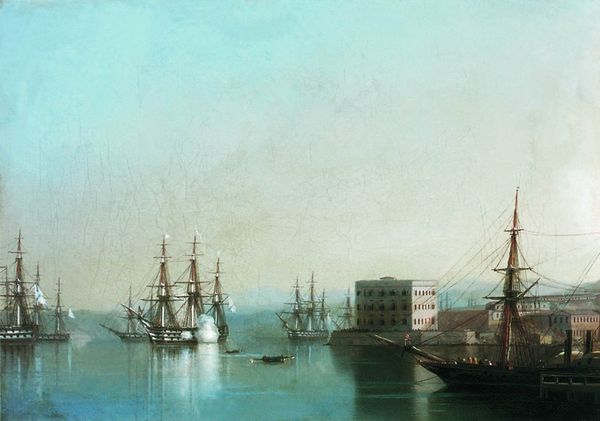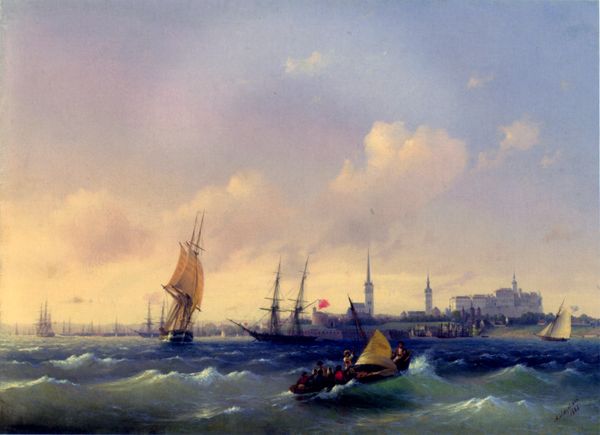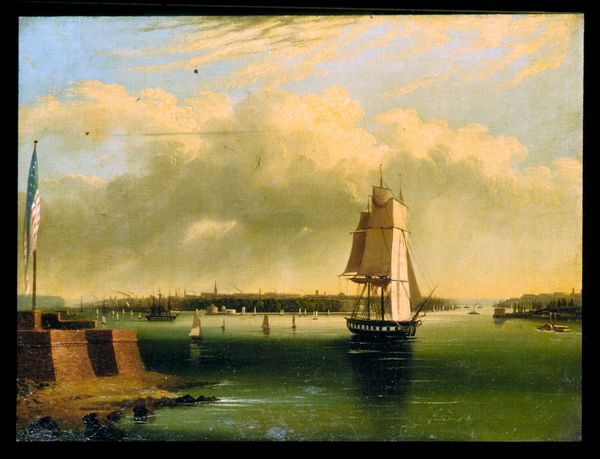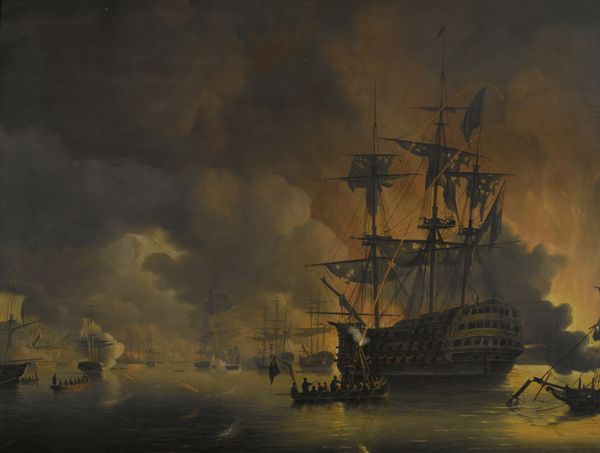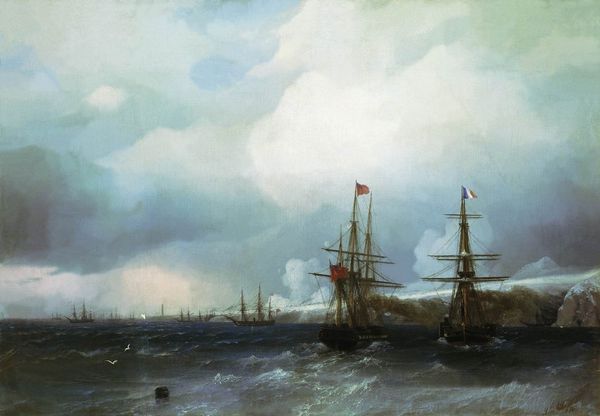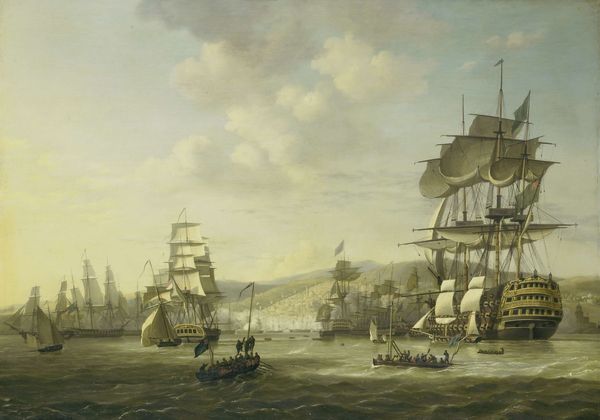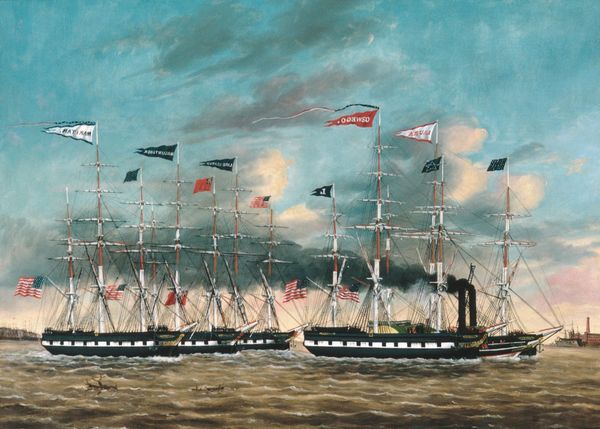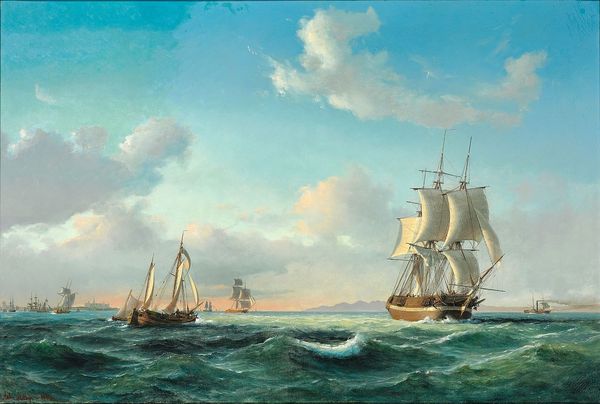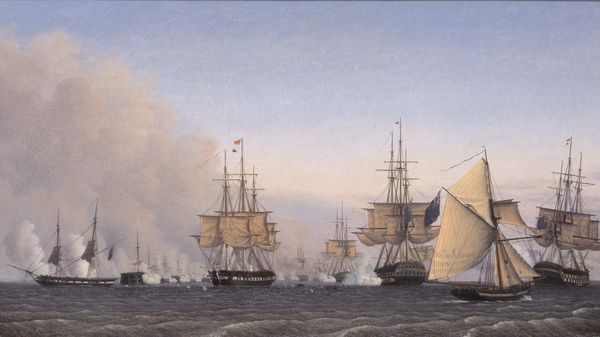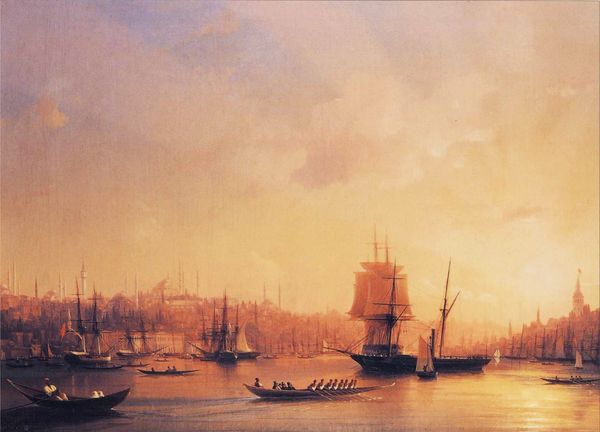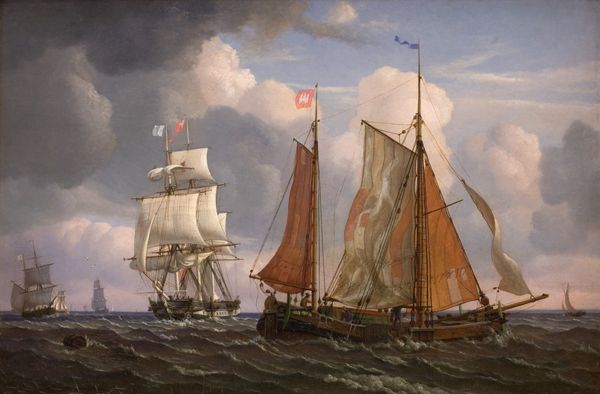
Den danske eskadre til ankers på Warnemünde rhed. Deres kongelige højheder kronprinsen og kronprinsessen ankommer på dampskibet "Kiel" til eskadren, og orlogsskibet "Christian den Ottende" begynder at salutere 1842
0:00
0:00
painting, oil-paint
#
painting
#
oil-paint
#
landscape
#
romanticism
#
cityscape
#
genre-painting
#
history-painting
Dimensions: 86 cm (height) x 130 cm (width) (Netto)
Curator: As you look at this canvas, consider the context of Friedrich Theodore Kloss’s 1842 oil painting, “The Danish Squadron at Anchor in Warnemünde Roads.” It depicts the arrival of the Crown Prince and Princess to the squadron via the steamship "Kiel," while the ship "Christian den Ottende" commences a salute. Editor: My immediate reaction is a sense of poised anticipation, everything appears calm, the atmospheric perspective subtly guiding my eye toward the hazy horizon. Curator: Indeed. The event being commemorated speaks to Denmark’s historical and political positioning at that time. Consider the maritime power it wished to project, not only in relation to European rivals but also in its colonial holdings and trading power in a global context. Editor: Absolutely, and focusing on Kloss’s artistic choices, one sees how the composition uses the ships as solid geometric forms anchored in the lower portion of the canvas, this stability offset by the billowing clouds and smoke, introducing movement and life. Curator: Right. And note that seemingly documentary painting also communicates ideas around monarchy and class structures, if we scrutinize the arrangement and the interactions between the figures disembarking. The very act of commemorating this specific event could also speak volumes regarding nationalism. Editor: Looking more closely, I see a calculated interplay of light and shadow across the water. The reflections mimic and subtly distort the shapes above. There's a clear semiotic dialogue established. What could you speak on that matter? Curator: The very presence of these grand ships speaks volumes about national aspiration and the power dynamics of the era, but these also hint at darker truths that have had implications far into our present time. It prompts us to examine what national pride can obscure, specifically thinking about issues surrounding power and social injustice. Editor: I agree, this piece does encourage looking past surface-level celebrations. Seeing how he juxtaposes sharp nautical lines and ethereal atmospheric conditions has been truly fascinating. Curator: Considering it through the context of socio-political history helps unravel more complete insights into the artistic process itself.
Comments
No comments
Be the first to comment and join the conversation on the ultimate creative platform.
